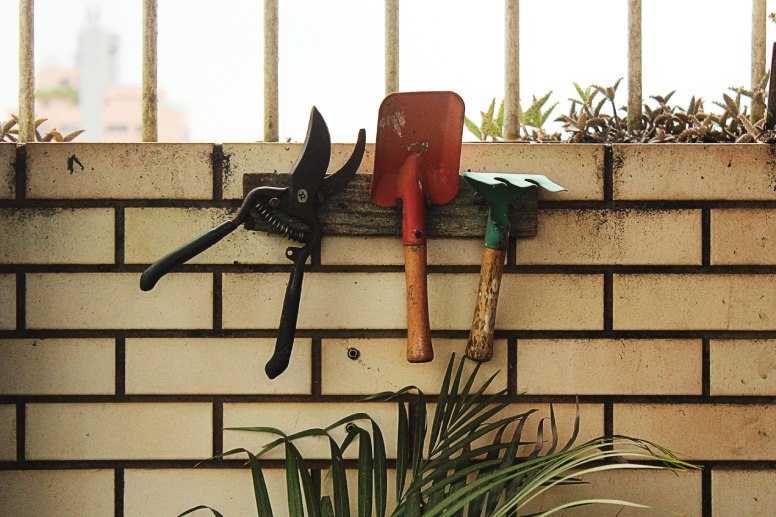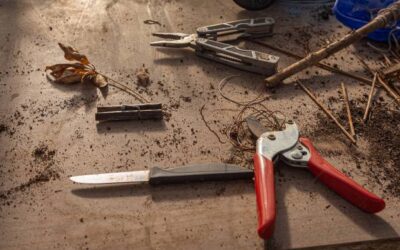In this article, you will learn about how to spot quality in Japanese garden tools and gain an introduction to their durability and maintenance. Japanese garden tools are known for their exceptional craftsmanship and longevity, making them a popular choice for gardening enthusiasts. By understanding what to look for in terms of quality and how to maintain these tools, you can ensure that your Japanese garden tools will last for years to come.
When it comes to spotting quality in Japanese garden tools, there are a few key factors to consider. Firstly, look for tools that are made from high-quality materials such as carbon steel or stainless steel. These materials are known for their strength and durability, making them ideal for withstanding the rigors of regular gardening activities. Additionally, pay attention to the construction and design of the tools. Japanese garden tools are often intricately designed with ergonomic handles and precise cutting edges, which not only enhance their functionality but also contribute to their overall quality.
Understanding Japanese Garden Tools
Overview of Japanese garden tool craftsmanship
Japanese garden tools are renowned for their exceptional craftsmanship and attention to detail. These tools are carefully constructed to meet the unique needs of traditional Japanese gardens, which embody a harmonious balance between nature and human design. The art of crafting these tools has been passed down through generations, resulting in a rich heritage of toolmaking expertise.
Types of tools commonly used in Japanese gardens
Japanese gardens require a specific set of tools to maintain their intricate designs and create the desired aesthetic. Some of the most commonly used tools include:
- Pruning shears (niwabasami): These shears are essential for maintaining the shape and health of plants in the garden. They are designed with sharp blades and a compact size for precise and intricate cutting.
- Hand cultivators (kuwa): These hand tools are used for loosening and turning the soil, as well as removing weeds. They have a sharp, curved blade and a short handle, allowing for efficient and controlled digging.
- Soil scoops (sudare): Sudare are used for scooping and transporting soil within the garden. They have a wide, shallow bowl-shaped blade and a long handle for ease of use.
- Bonsai tools: Bonsai, the art of growing miniature trees, requires specialized tools for pruning, shaping, and maintaining these small plants. Bonsai tools are designed with precision and finesse to work delicately on these intricate specimens.
Importance of quality and durability in Japanese garden tools
In Japanese garden culture, the longevity and durability of tools are highly valued. Quality tools not only contribute to the overall beauty of the garden but also ensure efficient and effective work. Japanese garden tools are built to last, with an emphasis on using materials and construction techniques that will withstand the test of time.
Identifying Signs of Quality
Craftsmanship and attention to detail
Japanese garden tools are meticulously crafted with great attention to detail. Look for tools that have clean lines, smooth surfaces, and well-finished edges. Each tool should be made with precision and care, reflecting the dedication of the artisans who create them.
Material and construction
The materials used in Japanese garden tools are carefully chosen for their durability and functionality. Traditional materials include high-grade carbon steel and stainless steel for blades, as well as hardwoods such as Japanese white oak or cherry for handles. Tools with quality materials are less likely to break or become damaged with regular use.
Balance and weight distribution
Well-designed garden tools should have a balanced weight distribution, allowing for comfortable and controlled handling. Tools that are too heavy or poorly balanced can strain your wrists and arms, making tasks more difficult and tiring. When choosing tools, consider how they feel in your hand and test their balance before making a purchase.
Testing Durability
Testing cutting tools for sharpness and edge retention
Sharp blades are essential for efficient and precise cutting in the garden. When examining cutting tools, check the sharpness of the blades and ensure they have a smooth cutting action. Additionally, a good-quality blade should retain its sharpness for a significant period of time, minimizing the need for frequent sharpening.
Checking for strength and flexibility in handles
Handles play a crucial role in the durability and usability of garden tools. They should be strong enough to withstand the force exerted during use, without bending or breaking. At the same time, handles should have a certain level of flexibility to absorb shock and prevent unnecessary strain on your wrists.
Evaluating rust resistance and corrosion prevention
Japanese garden tools often come into contact with soil, moisture, and other elements that can cause rust and corrosion. Look for tools that have been treated or coated to resist rust and corrosion. Stainless steel or carbon steel tools with protective coatings are less likely to degrade over time.
Maintenance and Care
Cleaning and oiling metal components
To maintain the longevity of your Japanese garden tools, it is important to clean and oil the metal components regularly. After use, remove any dirt or debris from the blades or other metal parts, and then apply a thin layer of oil to prevent rust. Be sure to wipe off any excess oil to avoid transferring it to plants or soil.
Sharpening and maintaining blade edges
Sharp blades are essential for clean and precise cuts in the garden. Regularly sharpen the blades of your cutting tools using a sharpening stone or file. Follow the manufacturer’s instructions for sharpening angles and techniques to ensure optimal results. Additionally, inspect the blade edges for any nicks or damage that may require repair or replacement.
Preserving wooden handles
Wooden handles require special care to ensure their longevity. Regularly inspect the handles for signs of dryness or cracking, and apply a protective finish or wood oil as needed. Avoid leaving wooden-handled tools exposed to prolonged moisture or extreme temperatures, as this can cause the wood to warp or weaken.
Choosing the Right Tools
Considering the specific needs of your garden
When selecting Japanese garden tools, consider the specific tasks and requirements of your garden. Different gardens may require different tools, depending on the size, layout, and types of plants grown. Take the time to assess your garden’s needs and choose tools that will allow you to work efficiently and effectively.
Evaluating your own gardening skills and preferences
Your personal gardening skills and preferences should also be taken into account when choosing tools. If you are a beginner, opt for tools that are easy to use and require minimal maintenance. Experienced gardeners may prefer more specialized tools that allow for greater precision and control.
Seeking recommendations and consulting experts
If you are unsure about which tools to choose, don’t hesitate to seek recommendations from experienced gardeners or consult with experts at local garden centers or horticultural societies. They can provide valuable insights and help you select tools that are well-suited to your needs.
Where to Purchase Authentic Japanese Garden Tools
Visiting specialist garden tool stores
Specialist garden tool stores often carry a wide selection of authentic Japanese garden tools. These stores are knowledgeable about the various brands and can provide guidance on choosing the right tools for your garden. Additionally, visiting a physical store allows you to examine the tools up close and assess their quality firsthand.
Ordering from reputable online retailers
Reputable online retailers specializing in Japanese garden tools offer a convenient option for purchasing authentic tools. Look for retailers with positive customer reviews and high ratings. Make sure to read the product descriptions and specifications carefully to ensure you are purchasing genuine Japanese-made tools.
Researching and attending garden tool exhibitions
Garden tool exhibitions and shows provide an opportunity to explore a wide range of tools in one place. These events often feature demonstrations and presentations by toolmakers, allowing you to learn more about the craftsmanship and quality of different brands. Take advantage of these exhibitions to discover new and unique tools.
Comparing Different Brands
Reviewing well-known Japanese garden tool manufacturers
There are several well-known Japanese garden tool manufacturers that have built a reputation for producing high-quality tools. Some notable brands include ARS, Okatsune, and Tobisho. Research the history and craftsmanship of these brands to gain a better understanding of their offerings.
Analyzing customer reviews and ratings
Customer reviews and ratings can provide valuable insights into the quality and performance of Japanese garden tools. Look for reviews that highlight durability, sharpness, and overall satisfaction with the tools. Keep in mind that personal preferences may vary, so consider a range of reviews to get a comprehensive understanding.
Learning from experienced gardeners and enthusiasts
Experienced gardeners and enthusiasts can offer valuable firsthand knowledge about different Japanese garden tool brands. Seek out gardening forums, social media groups, or local gardening clubs to connect with others who have used these tools. Their personal experiences and recommendations can help guide your decision-making process.
Understanding Pricing Factors
Factors influencing the cost of Japanese garden tools
The cost of Japanese garden tools can vary based on several factors. High-quality materials, superior craftsmanship, and brand reputation can all contribute to higher prices. Additionally, specialized or niche tools may command a higher cost due to their uniqueness and limited availability.
Differentiating between high-end and budget options
While high-end tools may come with a higher price tag, they often offer superior performance, longevity, and durability. Budget options, on the other hand, may be more affordable but may not meet the same quality standards. Consider your budget and priorities to determine which option best suits your needs.
Determining the value of long-lasting durability
Investing in high-quality Japanese garden tools may require a higher upfront cost, but the long-lasting durability can result in significant savings in the long run. Quality tools will reduce the need for frequent replacements or repairs, saving you time, money, and frustration.

Tips for Long-Term Tool Investment
Storing tools properly to avoid damage
Proper storage is essential for maintaining the longevity of your Japanese garden tools. Store them in a clean, dry place to avoid moisture damage. Consider using a tool rack or hanging system to keep them organized and prevent blades from dulling or becoming damaged.
Performing regular maintenance and inspections
Regular maintenance is key to preserving the performance and lifespan of your tools. Clean and oil metal components, sharpen blades when necessary, and inspect handles for any signs of wear or damage. By regularly caring for your tools, you can ensure they remain in optimal condition for years to come.
Investing in high-quality tools as a cost-saving measure
When it comes to Japanese garden tools, investing in high-quality options is a wise decision. While the initial cost may be higher, the durability and longevity of these tools will save you money in the long term. Choose tools that are built to last, and prioritize quality over price.
Conclusion
Appreciating the longevity and craftsmanship of Japanese garden tools is essential for any gardening enthusiast. By understanding the importance of quality and maintenance, you can ensure that your tools serve you well for years to come. With proper care and consideration, you can experience the joy and satisfaction of using well-crafted tools in your own garden. So, take the time to spot quality, choose wisely, and enjoy the benefits of a beautifully maintained Japanese garden.











